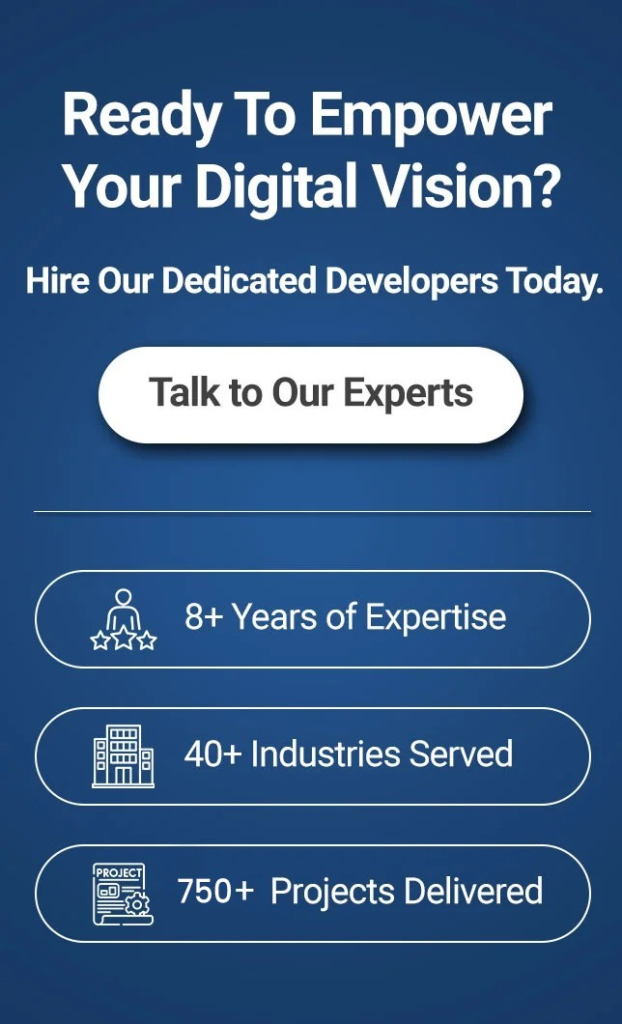It’s 2025!
And there’s hardly any technology buzzing around the internet more than “Progressive Web Apps” (PWAs)!
And why it shouldn’t be?
Whether you want to connect with a broader audience or provide users with mobile-friendly content, PWAs have got your back!
Well, the stats don’t lie!
Not only does it boost overall user engagement by 137%, but it may also help increase mobile sessions and increase page views by 80% and 42.86%, respectively! (Source: Adobe Experience Cloud).
No matter what device the user is on, these web apps will likely deliver an excellent user experience.
Excited to dive into the world of PWAs? If so, let’s get started!
| Table Of Contents: 1. What are Progressive Web Apps? 2. What are the Features & Benefits of Progressive Web Apps? 3. What are the Top 5 Examples of Progressive Web Apps? Conclusion |
What are Progressive Web Apps?
In layman’s language, a PWA is a web app that a user can access via their smartphone or desktop. It is a website built using web technologies, including HTML, JavaScript, and CSS, but acts exactly like a mobile app. Furthermore, these web apps come with modern APIs, which makes it easy to deliver enhanced capabilities along with reliability and hassle-free installation on any device. Also, it comes with a wide range of offline features, including instant loading, Push Notifications, and offline features.
Here’s the fact!
PWAs aren’t built using one specific technology. Instead, they revolutionize the new approach to web app development using modern features. When it comes to getting started, a website must register a service worker, use HTTP, and have a web app manifest file. Furthermore, these requirements serve to support a variety of modern features and capabilities.
What are the Features & Benefits of Progressive Web Apps?
Let’s take a look at the features and benefits of Progressive Web Apps.
1) They Work Offline
One of the biggest benefits of the PWAs is that they don’t need a constant internet connection. They store previously viewed content, so you can still browse even if you’re offline or have a weak signal. This is possible thanks to smart caching technology.
2) They Show Up in Search Engines
Another major highlighting aspect of the PWAs is that they are built to be easily found on Google and other search engines. They follow SEO-friendly standards, making them more discoverable. Plus, they use HTTPS for security and can even be added to your phone’s home screen for quick access.
3) You Can Install Them Like an App
Unlike regular websites, PWAs can be installed on your device, just like a native app. This means you can open them with a single tap from your home screen—no need to type a URL or open a browser.
4) Easy to Share
PWAs work with simple links, so you can send a direct URL to anyone, and they can open the app instantly—no downloads required. This makes it easier to share content without extra steps.
5) They Work on Any Device
PWAs adjust automatically to fit any screen—desktop, tablet, or smartphone. This ensures a smooth experience no matter what device you’re using.
6) Built-in Security
PWAs use HTTPS, which means all data is encrypted and secure. Plus, since they don’t require as many permissions as native apps, they’re less vulnerable to security threats.
7) More Affordable to Build
Last but not least, PWAs use common web technologies (HTML, CSS, JavaScript), making them much cheaper and faster to develop than native apps, which require separate versions for iOS and Android. You also save on app store fees.
Now that you have learned the features of PWAs, it’s time to look at some of the popular examples of Progressive web apps!
What are the Top 5 Examples of Progressive Web Apps?

1. Starbucks – Making Online Ordering Easy for Everyone
Starbucks wanted to create an online ordering system that was simple, fast, and accessible to all customers. To achieve this, they built a Progressive Web App (PWA) that provides the same smooth experience as their native mobile app.
One of the best features of this web app is that it works offline. Customers can browse the menu, customise their orders, and add items to their cart even without an internet connection. Once they are back online, they can see prices based on their location and place their order.
This offline capability is especially useful for customers who are constantly on the move, as well as those in areas with poor internet connectivity, such as rural regions.
The results of launching this PWA have been impressive:
- The web app is 99.84% smaller than the iOS app, making it much faster and easier to use.
- The number of web users placing orders has doubled.
- Desktop users now place orders just as often as mobile users.
2. BMW – A Faster and More Engaging Website
BMW is known for embracing new technology, both in its cars and on its website. To improve customer experience, the company created a PWA that delivers high-quality content while being incredibly fast and efficient.
When users visit BMW’s new website, they immediately notice the stunning, high-resolution images and videos that load almost instantly—four times faster than before.
The impact of this upgrade has been significant:
- 4X more users click from the homepage to a BMW sales page.
- 50% increase in mobile users.
- 49% growth in total website visits.
This proves that a fast, visually appealing, and engaging website can attract more visitors and potential customers.
3. Flipboard – Fast and Beautiful News Experience
Flipboard, a popular online news platform, used to be available only as a mobile app. However, they wanted to expand their reach by creating a PWA, making it accessible on desktop browsers as well.
This new version of Flipboard is designed to be lightweight and fast, minimizing data usage while still offering an elegant and smooth browsing experience.
Users can personalize their news feeds based on their interests, follow their favorite sources, and save stories, images, and videos to read later or share with others.
The PWA allows Flipboard to function just like their mobile app, but now on any device, providing a seamless experience for all users.
4. Uber – Booking Rides Anywhere, Even on Slow Networks
As Uber expanded into new markets, they needed a faster and lighter version of their app that would work well even on slow 2G networks and low-end devices.
To achieve this, they built a PWA from scratch, offering a similar experience to their mobile app but in a much smaller and more efficient package.
- The core app is only 50kB, making it incredibly lightweight.
- It loads within 3 seconds, even on slow networks.
- Riders using older phones or limited data plans can still book rides easily.
By bringing the Uber experience to the web, the company ensured that everyone, regardless of location or internet speed, can access their services.
5. Pinterest – Turning More Visitors into Users
Pinterest realized that its old mobile website was slow and ineffective, leading to low engagement and fewer sign-ups. Only 1% of mobile visitors signed up, logged in, or installed the app.
To solve this issue, they rebuilt their mobile website as a PWA, improving speed and performance. The results were impressive:
- 40% increase in time spent on the site.
- 44% growth in user-generated ad revenue.
- 60% rise in core user interactions (such as saving and sharing content).
By making the website faster and more engaging, Pinterest successfully attracted more users and increased revenue.

Conclusion
Keeping in mind that PWAs are new to the industry and haven’t yet been fully utilized, they can be a great addition to your toolkit.
Getting started with Progressive Web Apps (PWAs) using the latest technologies and the right tools can significantly boost sales and revenue for both individuals and organizations. From enhanced speed to app-like performance, PWAs offer a wide range of benefits. By leveraging these features, businesses can enhance user engagement, increase conversions, and expand their reach, leading to higher profitability and growth.
Ready to build a solid Progressive Web App? If so, simply visit EitBiz and attract your user base and turn them into potential customers.







